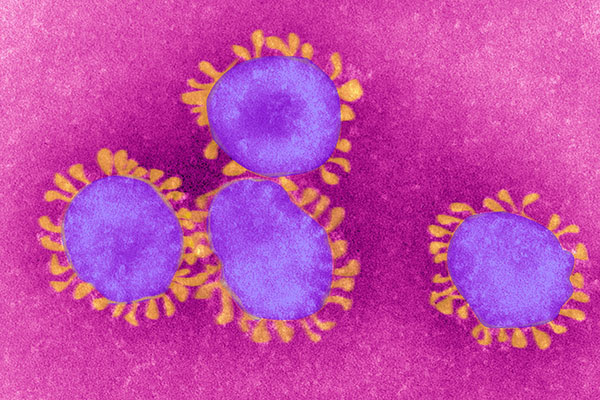US biotech firm Moderna has claimed to have developed a coronavirus vaccine in 42 days and the sample vials have been despatched to US researchers for the next phase, that is clinical trials on 25 healthy humans, sometime in April.
The US biotech firm Moderna is a Cambridge, Massachusetts-based company specializing on drug discovery and drug development based on messenger RNA (mRNA) technology. Founded in 2010, it received the Defense Advanced Research Projects Agency (DARPA) grant in 2013 to research and develop its mRNA drug technology to fight infectious diseases and biological weapons.
Moderna, NIAI vaccine
Ever since the outbreak of Wuhan coronavirus in January 2020, Moderna has partnered with National Institute of Allergy and Infectious Diseases to develop a vaccine for the COVID-19 and has claimed a breakthrough in less than 50 days. However, any vaccine that is developed now will have to undergo trials, which may take more than a year.
The company said in a statement that the coronavirus vaccine, called mRNA-1273, has been developed in 42 days and the vials have been despatched to the National Institute of Allergy and Infectious Diseases (NIAID) for tests.

NIAID Director Anthony Fauci said the "first step" in making a vaccine available will begin in April and after the successful clinical trials, the vaccine undergoes the next phase of trials on more humans before getting the nod from the federal agency to make the vaccine. In all, it might take an year for the vaccine to be made available in the market.
Why one year wait?
Vaccine development involves four phases of trials to evaluate its efficacy through preclinical and clinical phases. These trails define the product's components, in-process materials, final product specifications, and manufacturing process.
The Phase 1 and phase 2 clinical trial vaccines are typically produced in initial product development stage but based on at least one of the three or more consistency lots used for phase 3 clinical trials will be determining the final product.
Phase I trials
Once an idea appears promising, it is tested on a small number of healthy adults, called placebo-controlled studies involving 25 to 100 people to see whether the vaccine is safe and generating the expected immune response.
In Phase I trials, scientists should explore the possibility of making the vaccine in a quantity large enough for preliminary trials, to detrmine what preservatives or stabilizers to add so that the vaccine does not break down and whether any adjuvants are necessary to make it strong enough to generate immune response. It should consistently show positive results, which will be filed in application for approval from the Food and Drug Administration (FDA).
Phase II trials
The next phase, the clinical trials will be conducted on several hundreds of people, to determine the proper dose of vaccine and its safety. This phase also involves defining methods for consistent manufacturing the vaccine, stabilizing it, packaging mode, and establishing assays necessary for the trials. An important aspect of this phase is to establish manufacturing consistency, so that each lot comes out with similar results.The FDA is continuously apprised of the progress and results during this time. At any time during this process the company or the FDA can decide against the vaccine's development.
Phase III trials
This is the final stage of vaccine development before the FDA approval is sought. Studies in this phase involve not hundreds but thousands of participants to make it possible to calculate statistical differences between the experimental group and control group. For instance, trials on the rotavirus vaccine (RotaTeq and Rotarix) required about 130,000 participants since the previous version of it Rotashield vaccine caused a bowel obstruction.
During this phase, the testing sites will be under constant monitoring and adhere to protocol with samples collected and analyzed to study the participants' immune responses, whether they get the disease, and whether they suffer adverse reactions. In this phase, no one knows which participant received the vaccine or not and the results are cross-checked for accuracy.
Phase IV
In the next stage, the company reviews the data, requests for product license from FDA and prepared for the launch of the vaccine in the market. After the license, experts for the Centers for Disease Control and Prevention (CDC) will again review the data and determine who should get the vaccine. These are the third rung scientists who review the same data.
In this stage, the scientists or supervisors who helped the Phase III studies will publish the results in a scientific journal for peer review by other scientists. In many cases, the entire process takes 15 to 20 years for the final vaccine to reach the market and cost may reach at least $1 billion. In many cases, the products never reach this stage.









